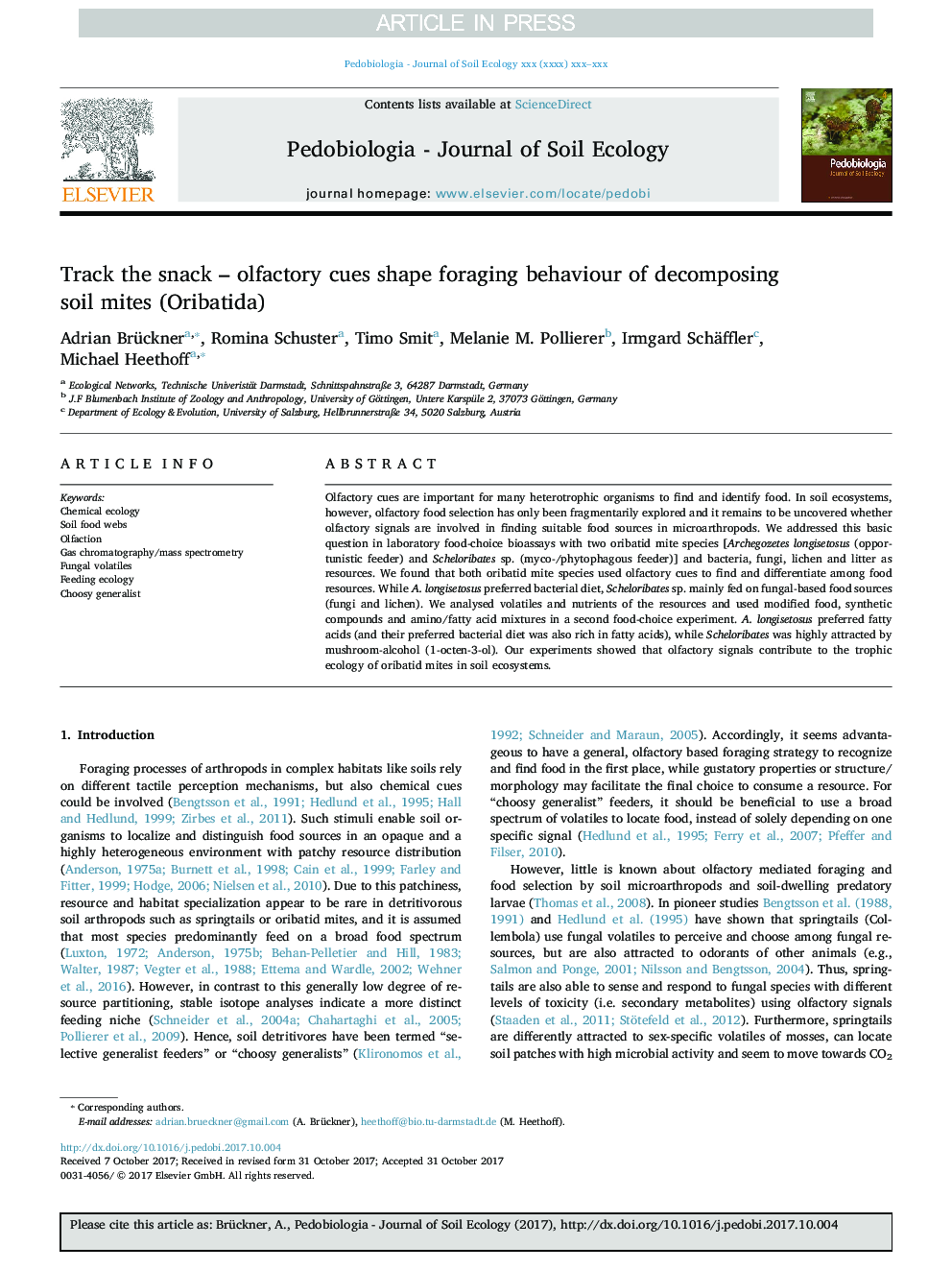| Article ID | Journal | Published Year | Pages | File Type |
|---|---|---|---|---|
| 8392524 | Pedobiologia | 2018 | 7 Pages |
Abstract
Olfactory cues are important for many heterotrophic organisms to find and identify food. In soil ecosystems, however, olfactory food selection has only been fragmentarily explored and it remains to be uncovered whether olfactory signals are involved in finding suitable food sources in microarthropods. We addressed this basic question in laboratory food-choice bioassays with two oribatid mite species [Archegozetes longisetosus (opportunistic feeder) and Scheloribates sp. (myco-/phytophagous feeder)] and bacteria, fungi, lichen and litter as resources. We found that both oribatid mite species used olfactory cues to find and differentiate among food resources. While A. longisetosus preferred bacterial diet, Scheloribates sp. mainly fed on fungal-based food sources (fungi and lichen). We analysed volatiles and nutrients of the resources and used modified food, synthetic compounds and amino/fatty acid mixtures in a second food-choice experiment. A. longisetosus preferred fatty acids (and their preferred bacterial diet was also rich in fatty acids), while Scheloribates was highly attracted by mushroom-alcohol (1-octen-3-ol). Our experiments showed that olfactory signals contribute to the trophic ecology of oribatid mites in soil ecosystems.
Keywords
Related Topics
Life Sciences
Agricultural and Biological Sciences
Animal Science and Zoology
Authors
Adrian Brückner, Romina Schuster, Timo Smit, Melanie M. Pollierer, Irmgard Schäffler, Michael Heethoff,
